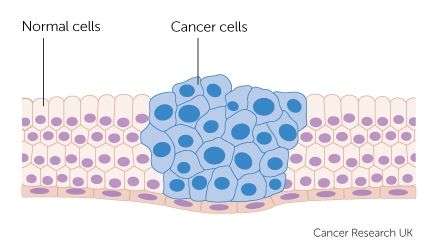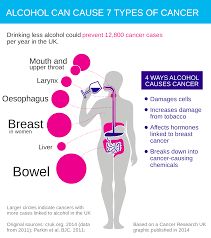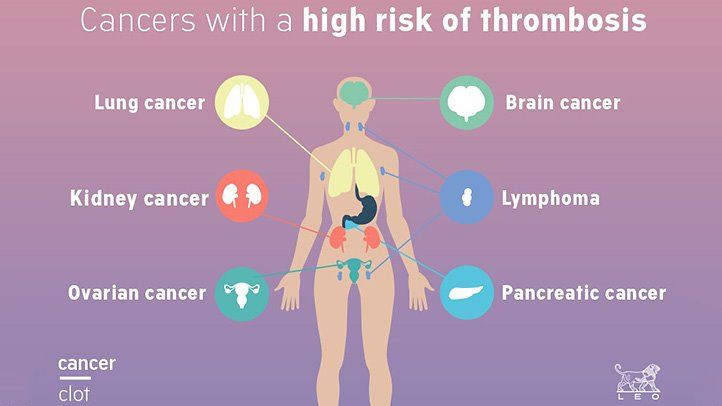Cancer...😬
Feb 11, 2019 • 13 views

Cancer is when abnormal cells divide in an uncontrolled way. Some cancers may eventually spread into other tissues.
There are more than 200 different types of cancer.
Cancer is a broad term. It describes the disease that results when cellular changes cause the uncontrolled growth and division of cells.
Some types of cancer cause rapid cell growth, while others cause cells to grow and divide at a slower rate.
A cell receives instructions to die so that the body can replace it with a newer cell that functions better. Cancerous cells lack the components that instruct them to stop dividing and to die.

As a result, they build up in the body, using oxygen and nutrients that would usually nourish other cells. Cancerous cells can form tumors, impair the immune system and cause other changes that prevent the body from functioning regularly.
Cancerous cells may appear in one area, then spread via the lymph nodes. These are clusters of immune cells located throughout the body.
Cancer grows as cells multiply over and over cancer cells growing through normal tissue diagram.Cancer starts when gene changes make one cell or a few cells begin to grow and multiply too much. This may cause a growth called a tumour.

Some cancers can spread to other parts of the body.Where cancer can spread diagram
A primary tumour is the name for where a cancer starts. It can sometimes spread to other parts of the body – this is called a secondary tumour or a metastasis.
Cancer and its treatments can affect body systems, such as the blood circulation, lymphatic and immune systems, and the hormone system.

Types
Each year, more than 40,000 people in the country receive a diagnosis of one of the following types of cancer:
bladder
colon and rectal endometrial
kidney
leukemia
liver
melanoma
non-Hodgkin's lymphoma
pancreatic
thyroid
Causes
In addition to smoking, risk factors for cancer include:
heavy alcohol consumption.
excess body weight.
physical inactivity.
poor nutrition

Treatment
Below are examples of approaches to cancer treatment:
Chemotherapy aims to kill cancerous cells with medications that target rapidly dividing cells. The drugs can also help shrink tumors, but the side effects can be severe.
Hormone therapy involves taking medications that change how certain hormones work or interfere with the body's ability to produce them. When hormones play a significant role, as with prostate and breast cancers, this is a common approach.
Immunotherapy uses medications and other treatments to boost the immune system and encourage it to fight cancerous cells. Two examples of these treatments are checkpoint inhibitors and adoptive cell transfer.
Precision medicine, or personalized medicine, is a newer, developing approach. It involves using genetic testing to determine the best treatments for a person's particular presentation of cancer. Researchers have yet to show that it can effectively treat all types of cancer, however.
Radiation therapy uses high-dose radiation to kill cancerous cells. Also, a doctor may recommend using radiation to shrink a tumor before surgery or reduce tumor-related symptoms.

Stem cell transplant can be especially beneficial for people with blood-related cancers, such as leukemia or lymphoma. It involves removing cells, such as red or
Surgery is often a part of a treatment plan when a person has a cancerous tumor. Also, a surgeon may remove lymph nodes to reduce or prevent the disease spread.
Targeted therapies perform functions within cancerous cells to prevent them from multiplying. They can also boost the immune system. Two examples of these therapies are small-molecule drugs and monoclonal antibodies.

